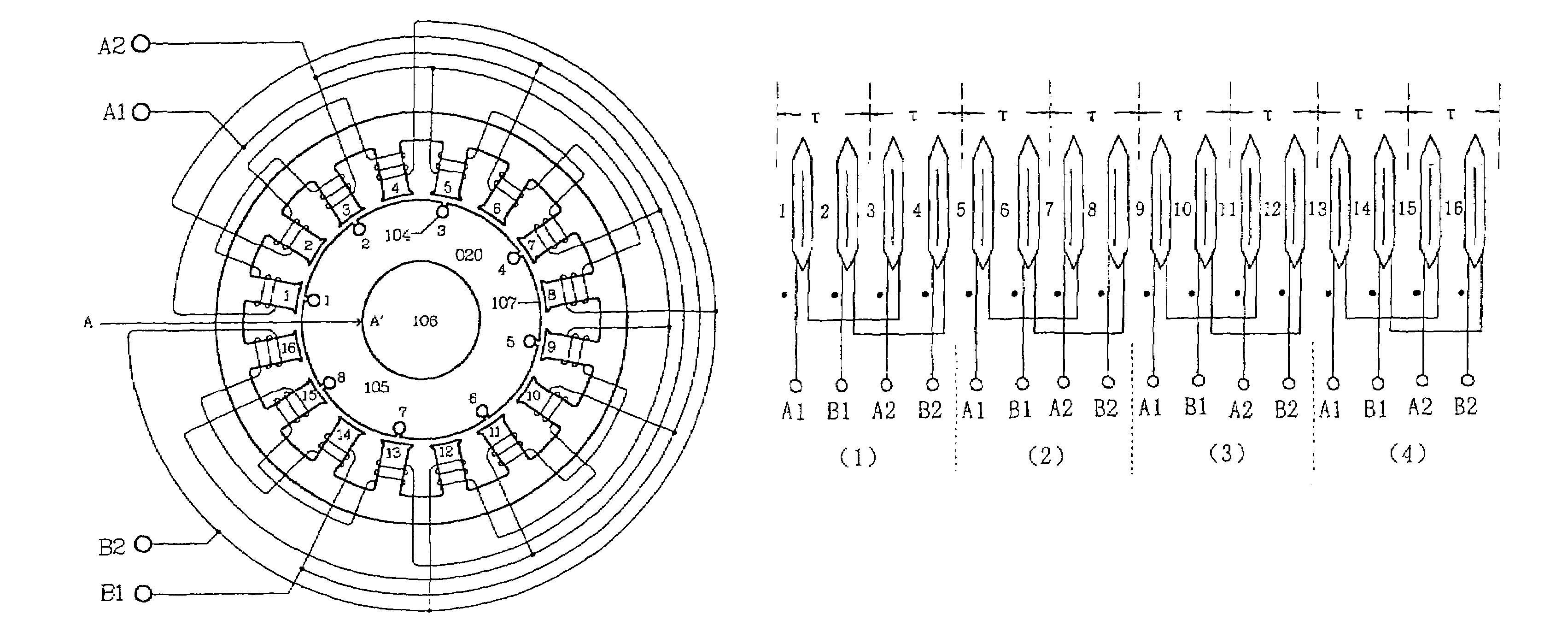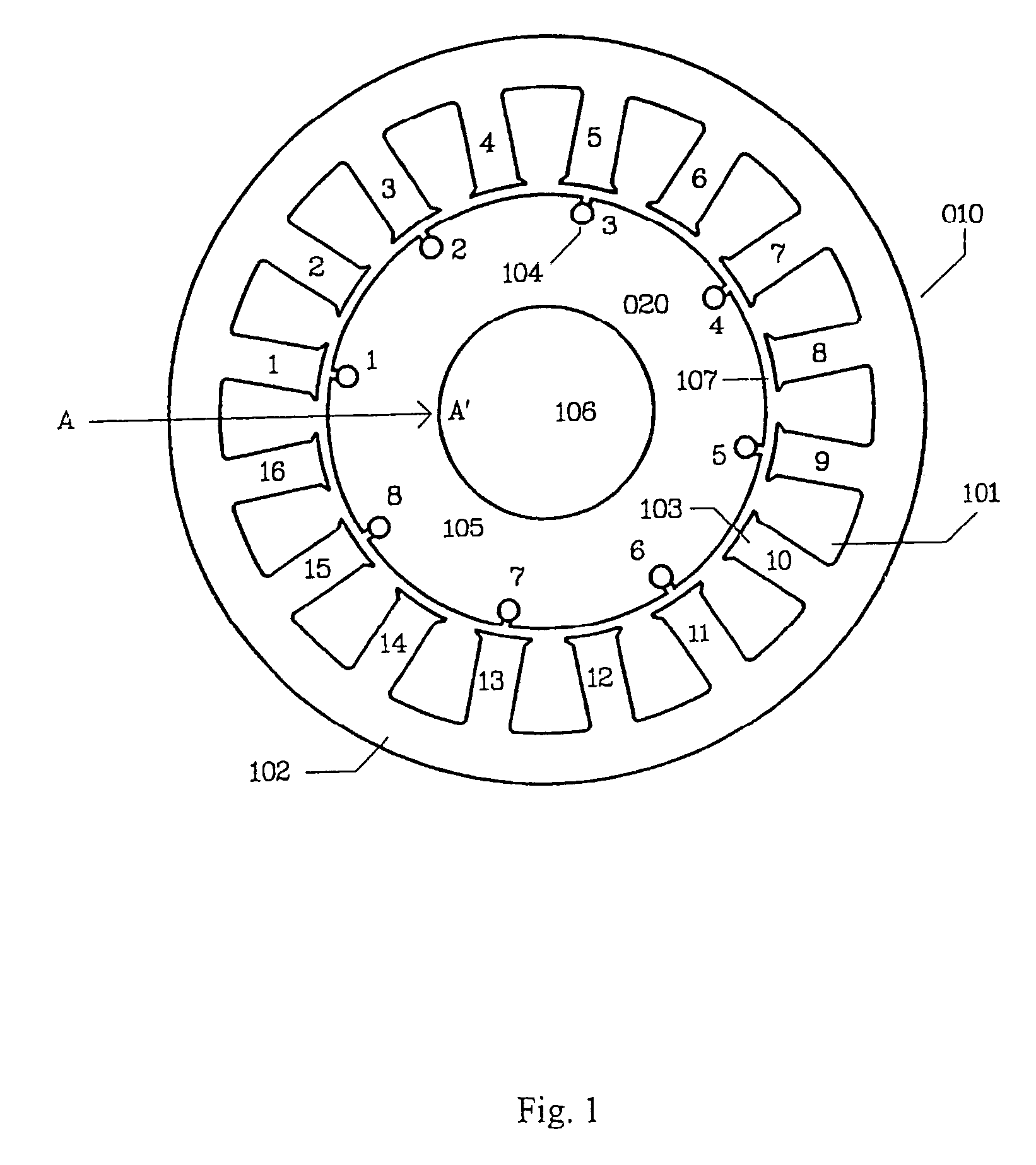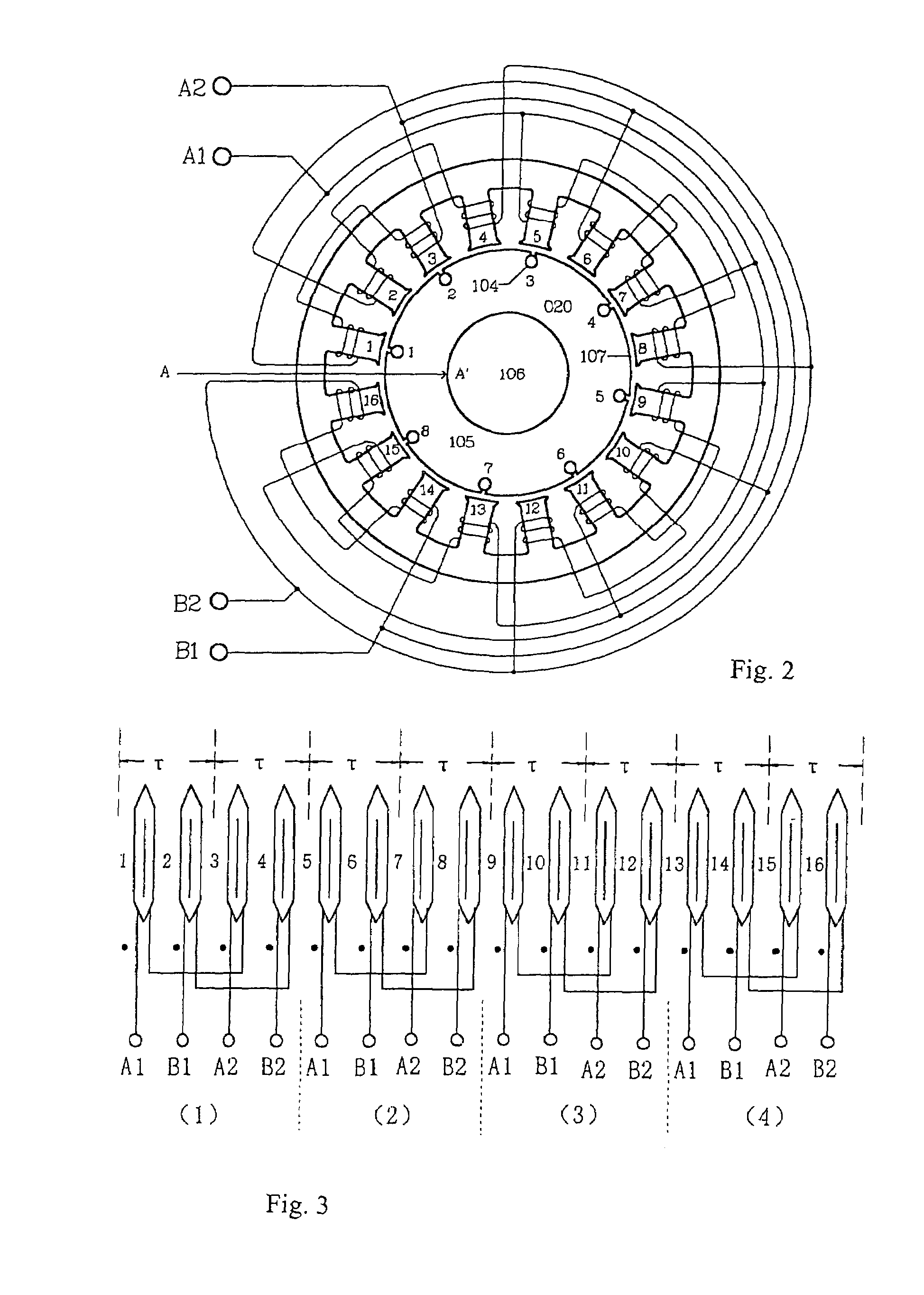Switching pattern AC induction motor
a technology of induction motor and switching pattern, which is applied in the direction of motor/generator/converter stopper, dynamo-electric converter control, etc., can solve the problems of unsatisfactory effect, increased cost, size and weight of the apparatus, and inability to obtain a lower rotating speed by decreasing the excitation ac frequency fb>, so as to achieve stable output torque of the motor, reduce the size of the motor, and save materials. a large amoun
- Summary
- Abstract
- Description
- Claims
- Application Information
AI Technical Summary
Benefits of technology
Problems solved by technology
Method used
Image
Examples
Embodiment Construction
[0022]FIG. 1 shows a transverse sectional view of the stator and the rotor in a two-phase motor with 16 grooves and 4 pairs of poles, wherein “010” is a stator core with a shape of hollow cylinder, “101” are stator grooves penetrating along the axial direction, “102” is a stator yoke, “103” are stator teeth distributed in an identical angle and extending inward along the radial direction, the stator grooves and the stator teeth are arranged alternatively surrounding the internal surface, “020” is a rotor having a cylindrical surface, “104” are conducting bars distributed in parallel with equal intervals along the cylindrical surface of the rotor core of the motor, the conducting bars and the conducting rings (not shown in the drawings) located at the two end-faces of the cylinder are welded to be a metal inductor like a squirrel cage structure, “105” is a rotor core, “106” is a rotor shaft, “107” is the air gap between the rotor and the stator, the rotor shaft is supported by a roto...
PUM
 Login to View More
Login to View More Abstract
Description
Claims
Application Information
 Login to View More
Login to View More - R&D
- Intellectual Property
- Life Sciences
- Materials
- Tech Scout
- Unparalleled Data Quality
- Higher Quality Content
- 60% Fewer Hallucinations
Browse by: Latest US Patents, China's latest patents, Technical Efficacy Thesaurus, Application Domain, Technology Topic, Popular Technical Reports.
© 2025 PatSnap. All rights reserved.Legal|Privacy policy|Modern Slavery Act Transparency Statement|Sitemap|About US| Contact US: help@patsnap.com



